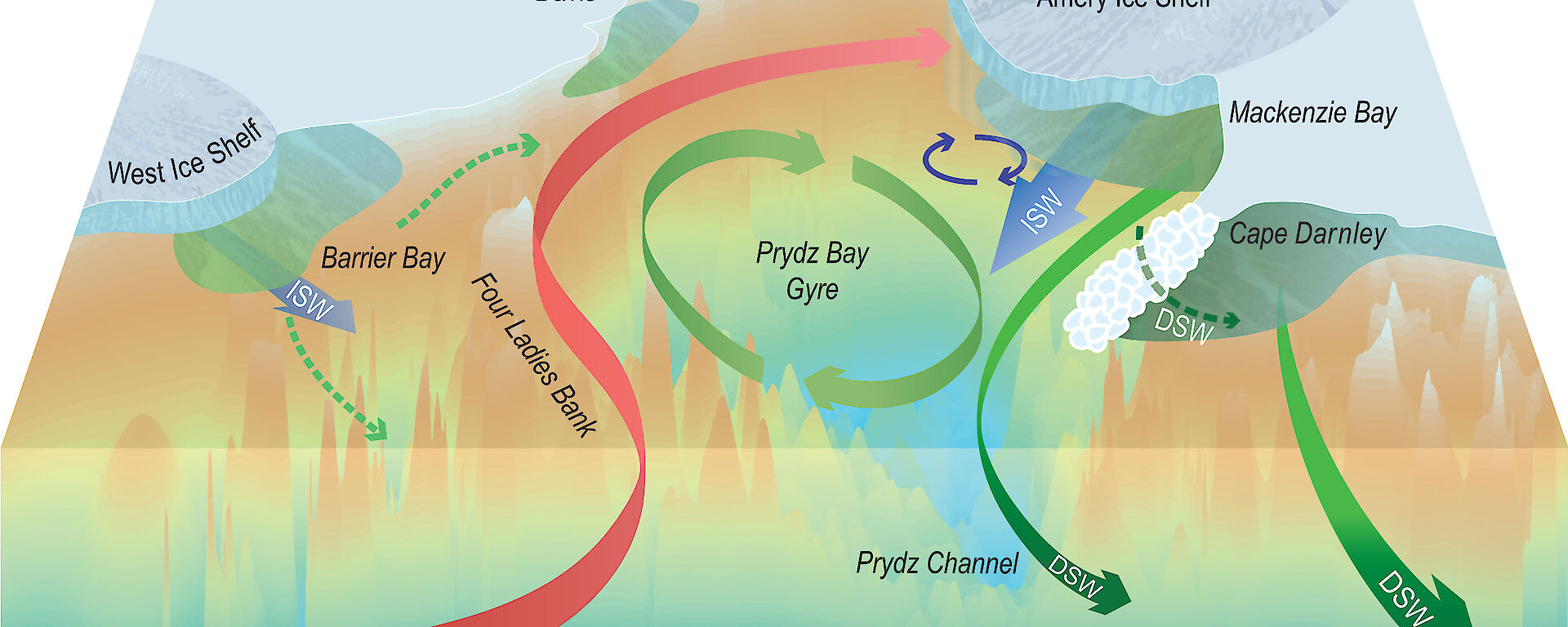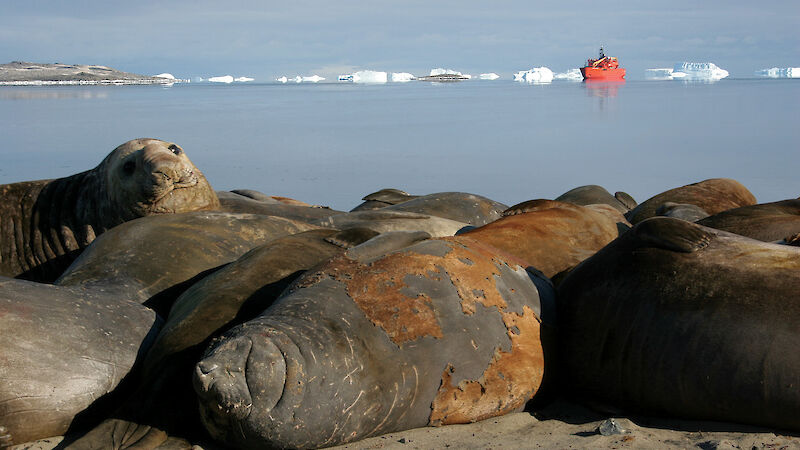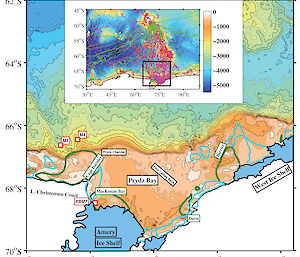Elephant seals have helped show that fresh water from melting Antarctic ice shelves can interfere with the formation of deep ocean currents that drive global ocean circulation and affect climate.
The research, published in Nature Communications and led by Dr Guy Williams from the Institute of Marine and Antarctic Studies and Antarctic Climate and Ecosystems Cooperative Research Centre, shows that the formation of cold, salty ‘Antarctic bottom water’ in Prydz Bay (near Davis research station), is reduced by the inflow of fresh meltwater from the nearby Amery Ice Shelf and West Ice Shelf.
The discovery comes after the analysis of temperature and salinity data collected by small oceanographic instruments attached to elephant seals.
“Antarctic bottom water production is vital to the Earth’s climate system and biogeochemical cycles because it results in powerful currents of cold water that drive global ocean mixing and regulate atmospheric temperatures,” Dr Williams said.
“If the production of Antarctic bottom water weakens, through processes such as those identified in this study, it would lead to changes in global ocean circulation patterns that could, in turn, change the global climate.”
Antarctic bottom water is created when sea ice forms in winter, close to the continental shelf. As it forms, the sea ice rejects salt, making the water below saltier and denser (known as ‘dense shelf water’). While sea ice grows everywhere around Antarctica in winter, there are only a handful of regions — known as ‘polynyas’ (or ice factories) — where enough sea ice forms to produce the dense shelf water necessary for Antarctic bottom water.
Scientists have known about three sources of Antarctic bottom water, in the Weddell Sea, Ross Sea and Adélie Coast, since the 1970s. In 2013 Dr Williams and other Australian and Japanese scientists confirmed a fourth source of bottom water at Cape Darnley — thanks in part to elephant seals tagged with oceanographic instruments for an unrelated seal behaviour project* (Australian Antarctic Magazine 24, 6–7, 2013).
These instruments included a small satellite relay that transmitted temperature, salinity and location data up to four times a day, during the five to 10 minute intervals when the seals surfaced.
“Several of the seals travelled into the Cape Darnley polynya in the middle of winter, providing information on the source of this Antarctic bottom water, in an area that had proven impossible to access by ship,” Dr Williams said.
Following on from this success Dr Williams’ team analysed a further two years of salinity and temperature observations from 20 instrumented seals, to expand the spatial and seasonal coverage of Antarctic bottom water formation at Cape Darnley and the nearby Prydz Bay region. The seals foraged to depths of 1800 metres up to 60 times a day while they were in the region (see map).
“Our 2013 study suggested that Prydz Bay, which is adjacent to the Amery Ice Shelf, contributed to Cape Darnley’s bottom water,” Dr Williams said.
“This extra two years of data has confirmed that Prydz Bay does contribute bottom water to the Cape Darnley source, but it is fresher, due to meltwater from the Amery and West ice shelves.”
Despite strong sea ice production from three polynyas in the region, Dr Williams said freshening from the ocean/ice-shelf interactions limits the overall formation of dense shelf water in Prydz Bay.
“This study highlights the susceptibility of Antarctic bottom water to increased freshwater input from the enhanced melting of ice shelves, and ultimately the potential collapse of Antarctic bottom water formation in a warming climate,” he said
“We can easily imagine that the production of global ocean currents will slow as the rate of ice shelf melting all around Antarctica continues to increase.”
Wendy Pyper
Australian Antarctic Division
The elephant seal data is accessible from the Integrated Marine Observing System (IMOS) data portal. The oceanographic data collected by the seals is also used for ecological research into their behaviour, and aids in conservation. Animal ethics approval for the research was received from Macquarie University, University of Tasmania and the Australian Antarctic Program.
*Australian Antarctic Science project 4329




